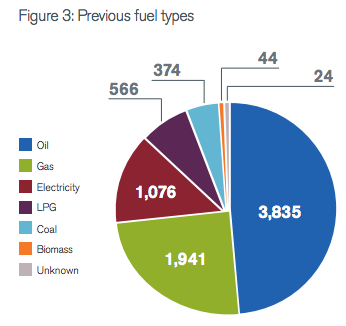ALTERNATIVE POWER SOURCES

Molten salt is the key to this reactor’s safety.
It’s pretty straightforward to get some coders together in a spare room to create a software start-up. Should a nascent company have hardware inclinations, it might set out to make a consumer electronics gadget with an assist from Kickstarter. And then there’s Transatomic Power Corp., of Cambridge, Mass., which is trying to build a nuclear reactor.
Cofounders Leslie Dewan and Mark Massie began dreaming up the idea in 2010, while working on their Ph.D.s in nuclear engineering at MIT. “We realized this is probably the smartest we will ever be in our lives,” Dewan remembers. So the two decided to use their knowledge to design a better reactor, one that deals with what they see as the nuclear industry’s biggest problems: waste and safety.
The Fukushima disaster reignited the nuclear power debate, but it turns out, even with its faults, nuclear power is saving lives! That’s according to a new NASA study about the effects of pollution on health.
The design they came up with is a variant on the molten salt reactors first demonstrated in the 1950s. This type of reactor uses fuel dissolved in a liquid salt at a temperature of around 650 °C instead of the solid fuel rods found in today’s conventional reactors.
Improving on the 1950s design, Dewan and Massie’s reactor could run on spent nuclear fuel, thus reducing the industry’s nuclear waste problem. What’s more, Dewan says, their reactor would be “walk-away safe,” a key selling point in a post-Fukushima world.
“If you don’t have electric power, or if you don’t have any operators on site, the reactor will just coast to a stop, and the salt will freeze solid in the course of a few hours,” she says.
Dewan and Massie incorporated the company in April 2011, but they were still essentially just two grad students with a cool idea. Then, after their presentation at a TEDx meeting in November 2011, they met Russ Wilcox, the founder and former CEO of E Ink Corp. Having sold E Ink for US $215 million in 2009, Wilcox was looking for a new project, and he had reason to be receptive to Dewan and Massie’s scheme for extra safe nuclear power: He and his family had been at Tokyo Disneyland when the Fukushima disaster began, and he had gotten a dose of Japan’s nuclear fear.
Wilcox also thought it augured well for the technology when the TEDx attendees gave the talk a standing ovation, as nuclear projects often depend on public support. Soon the three decided to go into business together.
The team has raised about $1 million so far, much of that from friends, family, and angel investors who aren’t expecting immediate returns; now they’re looking for $15 million more to fund a series of lab experiments. Wilcox says this research will quickly reveal whether the reactor will work.
“You want to start with the riskiest parts of your design and test those first,” he says, adding that he learned that lesson while at E Ink. “Don’t spend effort designing the box before you’ve built the product.”
If those experiments reveal no showstoppers, Transatomic hopes to find industrial partners to help build a 5-megawatt demonstration plant at a U.S. national lab site. And if that demonstration is convincing, Dewan and Massie’s reactor will be ready for full-scale commercialization.
But Dewan says that’s where the entrepreneurial ride will end. “We can’t become the next Westinghouse,” she says. “The goal is to demonstrate that this is a functional technology; then we would likely be subsumed by one of the industrial partners that funded us in the earlier phases.”
According to Albert Machiels, an expert on advanced nuclear reactors at the Electric Power Research Institute, the industrial giants of the United States and the European nuclear industry are “not bullish” on advanced reactors. But the global market looks quite different, with countries such as China and India pursuing ambitious nuclear power policies.
Machiels also notes that another interesting nuclear start-up, the Bill Gates–backed TerraPower, is cooperating with international organizations in China and elsewhere to develop its technology. If these start-ups can prove out their engineering and economics, they might find willing buyers for their intellectual property on other shores.
Source








 The dream of a completely clean, high powered and almost limitless renewable energy source is getting closer. Nuclear Fusion is the process by which atoms
The dream of a completely clean, high powered and almost limitless renewable energy source is getting closer. Nuclear Fusion is the process by which atoms






Recent Comments